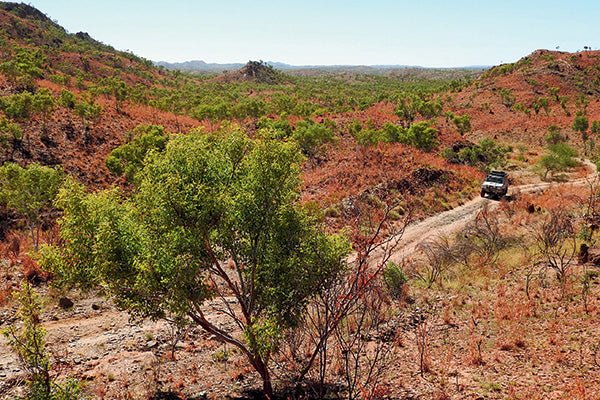
Things to remember when planning your next outback trip
|
|
Time to read 2 min
|
|
Time to read 2 min
Late last year, a couple became stranded in the not-so-remote outback of WA and, while a police search wasn’t successful, they were still found by friends who’d used a spare mud map they’d deliberately left behind. While they might have been better prepared with an EPIRB, a SPOT-like messenger device, or a sat-phone, the couple had done most things right, including having water and food and staying with their broken-down vehicle.
Those preparatory measures and arrangements bring to mind the old army adage of the ‘7 P Rule’ – ‘Prior Preparation and Planning Prevents a Piss Poor Performance!’
It doesn’t matter if you are heading out on your first outback trip or your 21st trip, to make a success out of it, there are a few simple steps to follow that will pay dividends in terms of safety and enjoyment.
Service your vehicle and have it checked by a professional 4WD service centre who knows what the vehicle is going to go through. Most vehicle manufacturers’ service outlets in the leafy suburbs of Melbourne or Sydney have no bloody idea!
If you are new to 4WDing, then it pays to do a course with a club or a private operator. It will yield huge advantages whether travelling on an outback dirt road, a mountain track or a sandy beach.
Don’t ever go into the outback on worn tyres – you are just asking for trouble. They should have at least 70 per cent of the tread and be of light truck (LT) construction. Highway orientated or passenger tyre construction tyres do not last on rocky corrugated dirt roads, let alone on rough tracks.
Plan your route and figure out such important criteria as the longest distance between fuel and water. Ensure you carry enough and always add a minimum of 10-20 per cent as a safety margin.
Make sure you have all the required permits – some take up to six weeks to be issued. Get the maps you want and if possible a good guide book that covers the area you are heading to. You’ll see a lot more and there will always be plenty of opportunity for your own explorations.
When you pack your vehicle, keep in mind what you need on a daily basis and what you may need once or twice and pack it accordingly. Don’t put heavy items up on the roof rack and keep fuel and gas containers out of the vehicle’s cabin. Watch the weight as overloaded vehicles are more prone to break downs and accidents.
Before you go, let someone know your travel plans and tell them when you will contact them and at what times. Police stations, especially in the outback, are not geared up to keep a check on each and every traveller who is heading into the Simpson Desert, along the Canning Stock Route, or similar remote backtracks – they’re too busy for that!
Good communications are essential; a UHF radio for short range comms between vehicles or even cattle properties, a HF radio or a sat phone for safety and long distance communication. At the very least carry an EPIRB distress beacon, or a SPOT messenger device, or similar.
Somebody in your party should have done a first-aid course and you should always carry a first-aid kit and first-aid manual. While being bitten by a snake or something even more deadly is a remote possibility, coming across a road accident is not so far fetched. Knowing what to do can save someone’s life – maybe even someone very close to you.
And lastly, if you do break down in some remote spot, never leave your vehicle. With prior preparation and planning, a vehicle will have all the food and water you need, along with protection from the elements… and is a darn sight easier to find than a lone person wandering through the bush.
Check out the full feature in issue #111 of Camper Trailer Australia magazine. Subscribe today for all the latest camper trailer news, reviews and travel inspiration.